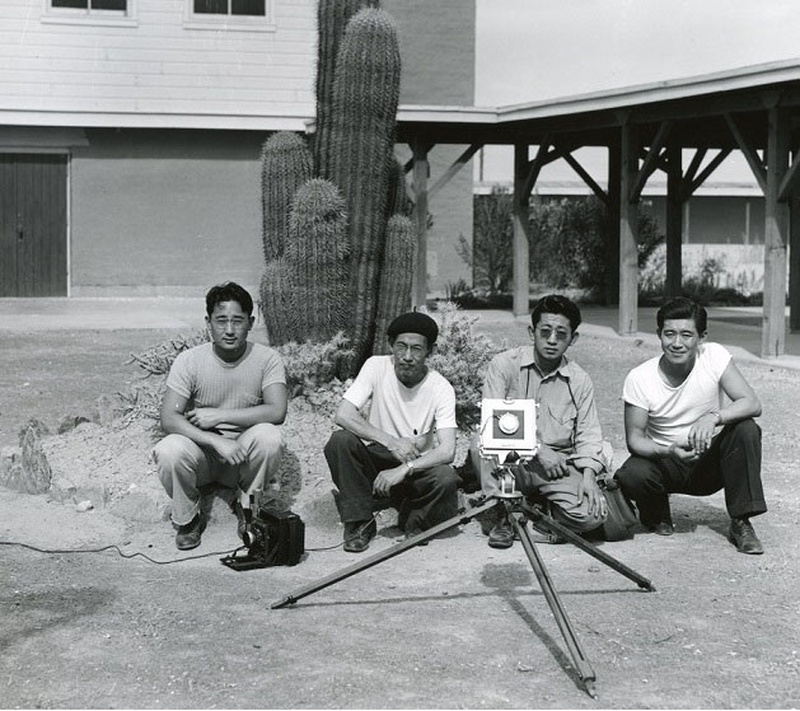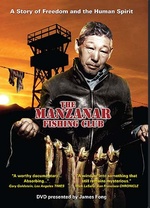It’s pretty much standard procedure among filmmakers to embrace favorable reviews and pretend the bad ones never happened. Oftentimes it’s ego, at other times business; but every now and then, the critic affirms what you set out to do…and that’s how I felt when Tom Keogh of the Seattle Times wrote:
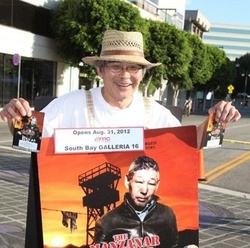
“Proving that sometimes the best way to grasp a big narrative is through a deceptively narrow approach, this labor of love by writer Richard Imamura and director Cory Shiozaki…takes a unique angle on the human (and American) craving for freedom.”
That, in a nutshell, is The Manzanar Fishing Club. Yes, it’s the “deceptively narrow” tale of the inmates who would sneak out of the Camp to go fishing, but it’s the “bigger narrative” as well.
It boils down to the simple fact that the fishermen were also living at Manzanar, sharing the same experiences as everyone else. They had gone through the same fear and uncertainty of the round-up and the humiliation of being shuffled off like cattle to their new “homes” in ramshackle barracks. They too were subject to the day-to-day oppression of life behind the barbed wire fence. Was there something in their unique pursuits that could foster different perspectives and understanding of the entire experience?
After going over the first few interviews done before I joined the project (five or six, to the best of my recollection), I got a general idea of a storyline. The more information we accumulated, the more new points came to light. The story kept expanding, and the initial plan calling for a 22-minute short film was quickly dropped in favor of a more comprehensive and textured feature-length documentary. It was still about the fishermen, but it would also examine larger issues through their eyes and experiences.
It has already been amply chronicled how the determination of the fishermen exemplified the defiant thirst for freedom among the “Ordinary Joes” at Manzanar. Their refusal to toe the line was different only in scale from the spirit that drove such Civil Rights heroes as Fred Korematsu, Gordon Hirabayashi, and Min Yasui. Through their actions, the fishermen showed that the spirit of resistance ran deep into the community.
Expanding our story had made it possible to add new textures to the tale, and another great opportunity cropped up in our interview with Dr. Arthur Hansen, the noted historian/scholar on the Internment and Professor Emeritus of History at California State University at Fullerton. He gave us a firm foundation with regard to the history and social issues at play, detailing the historical prejudices that preceded the roundup, the various mechanisms that implemented it and a wealth of insights into the daily life at Manzanar. He provided what amounted to “guideposts” to help in understanding what many of the actions and events meant.
Then Dr. Hansen asked that we not forget the Issei, who he said were routinely glossed over or even omitted in previous Internment documentaries.
That struck a nerve! We were aware of some Issei fishermen—and very prominent ones to boot—and I was about to gloss over them (as a group) once again. The reason was partly simple, there were no Issei alive to tell their stories; but it was also an embarrassing admission that I too had relegated them to the background of the story.
Then it struck me that as a Sansei, I still had had the privilege of knowing my Issei grandparents. I had living memories of them. Probably not so for the Yonsei and Gosei (and maybe even some younger Sansei). This could be an opportunity to bring the Issei back to life as people!
Remedying my misguided outlook soon took on a life of its own. Issei were already being mentioned in the film, but efforts were redoubled to find second- and even third-hand accounts of their experiences and achievements. They would not be the Forgotten Generation in The Manzanar Fishing Club.
The redirected efforts bore fruit, and “The Dispossessed,” our homage to the Issei, was a part of the film. As Narrator Bonnie Perkinson recites:
“The Issei pioneers lost the efforts of a lifetime in the roundup.
Then things took a turn for the worst…At Manzanar, the Issei immigrants found
a situation stacked perversely against them.Barred from becoming citizens,
they were bypassed by the Authorities.Communal barracks and mess halls
undermined their family authority.It was a slippery slope descending from
community leaders and family breadwinners
to wards of the state.”
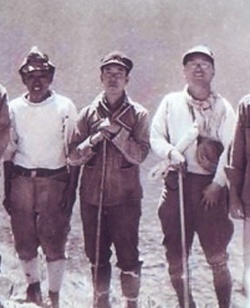
How the Issei fishermen coped with the situation is demonstrated by three vastly different personalities coming from widely divergent situations:
Frank Hosokawa [from Los Angeles]had a wife
and two daughters, with a third on the way.Heihachi Ishikawa from Centinela was 53 years old
when he arrived at Manzanar with his son Frank…
[and] was probably the oldest active fisherman.And then there was James Numa from Sawtelle.
43 years old…single…and a real iconoclast.
Hosokawa’s tale is related by his son Don, who came to us out of the blue with documents, photos, vintage fishing tackle, and a wealth of passed-down stories.
Ishikawa (who was the original inspiration for this project when Cory saw an old Toyo Miyatake photo of a man from Manzanar with a stringer of trophy-sized Golden trout) is described by his grandson Dale.
Numa remained a mystery man mentioned only in a snippet from a Los Angeles Times article until we realized that he had been friends with Ken Miyamoto, the irascible Nisei fisherman who seems to have been everywhere. Filling out Numa’s story through Miyamoto’s recollections saved this special memory.
While not the primary focus of the film, I’m gratified that the story of the Issei made it in. They were the pioneers…and we should never forget that.
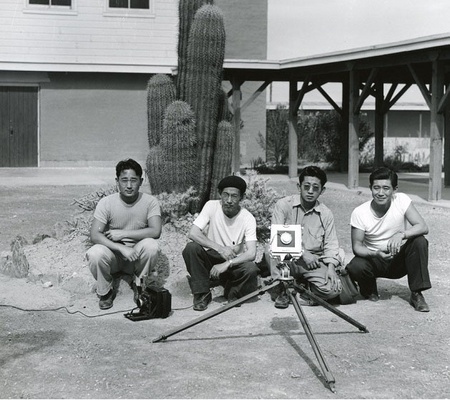
* * *
FILM SCREENING
The Manzanar Fishing Club by Cory Shiozaki
Saturday, April 20, 2013 • 2PM
Japanese American National Museum
Los Angeles, California
Q&A to follow with filmmakers.
The film is available for purchase through the JANM online store >>
© 2013 Richard Imamura


